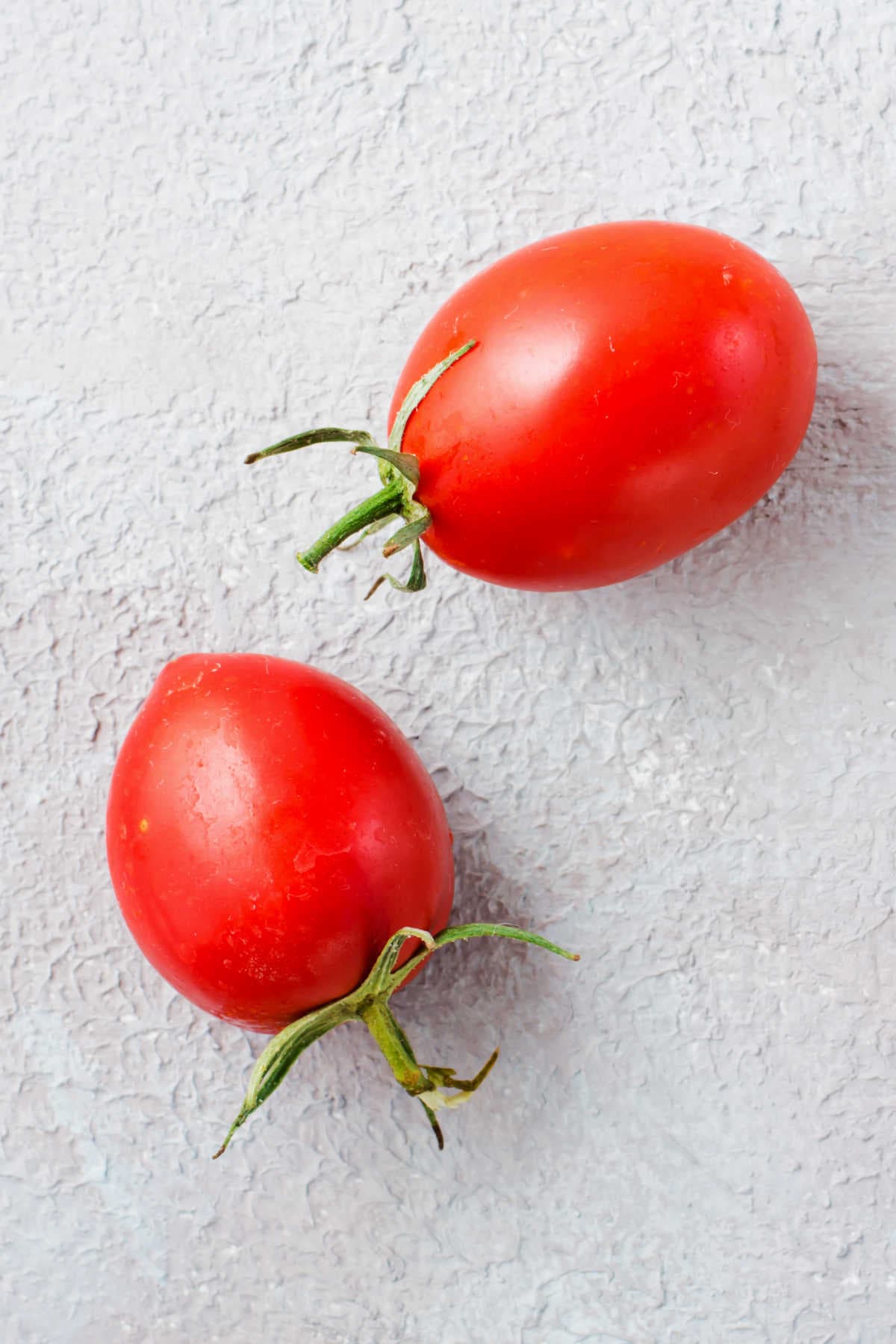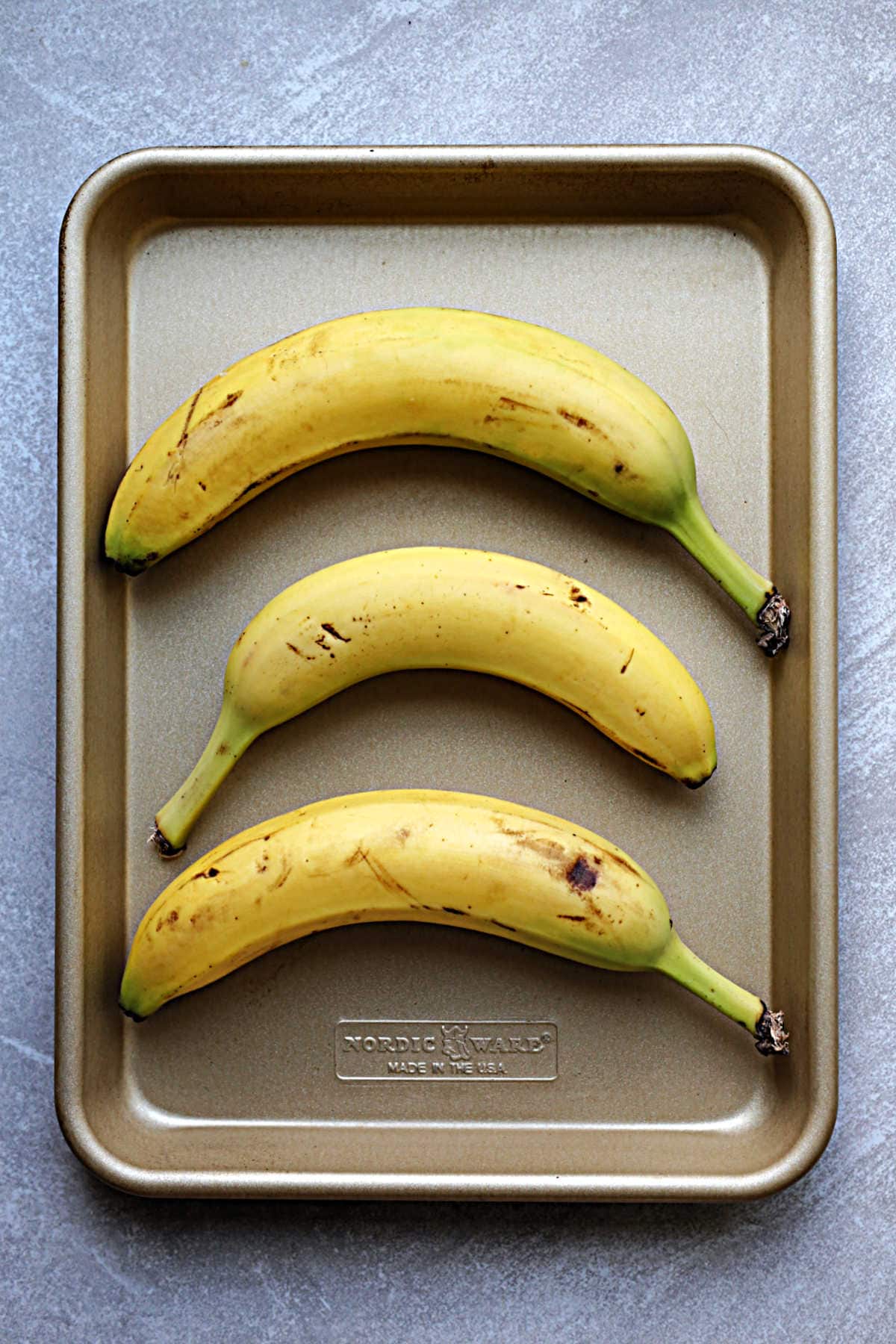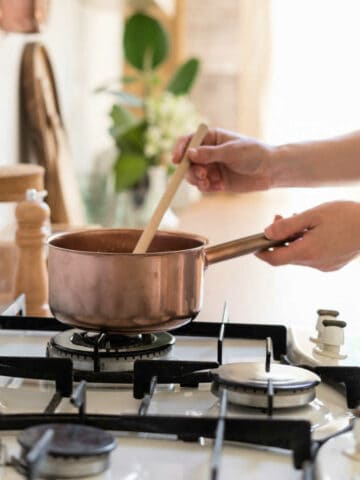Where do you keep a bunch of tomatoes you bought at the farmers' market or grocery store in your fridge or pantry? Here's how to store tomatoes and whether they should be refrigerated?

Ready to level up your tomato storage game? Fresh tomatoes are wonderful for making tomato paste and homemade marinara sauce or tomato sauce. Considering there is a difference between tomato sauce and tomato paste, it all comes from the same place- fresh tomatoes!
Learn how to uncover powerful techniques that will not only keep your tomatoes fresh but also transform the way you perceive their storage. Embark on this journey to become the tomato storage expert you never knew you could be!
Jump to:
How to store tomatoes
This isn't a difficult issue, but it does have the potential to cause disagreement. I used to always wonder this question, and I store them in both the fridge and pantry or kitchen counter depending on the needs of the fruit and how it is looking - whether it is hard, soft, or ripe.
Others want their tomatoes ripe and juicy at room temperature. Some people, on the other hand, feel that the chilly temperatures of the refrigerator are just what the product needs.
Everybody wants the same thing when it comes to storing tomatoes: fresh, flavorful tomatoes that can be eaten and cooked for an extended period. Tomatoes are versatile and may be used in various ways, from a zingy gazpacho to a substantial easy tomato sauce or even eaten raw like an apple. It is also cooked down into tomato paste or a tomato paste alternatives that makes a lovely spread in a tomato onion tart recipe and to thicken sauces. To understand how to preserve tomatoes properly, keep reading.
Is it really necessary to keep tomatoes in the refrigerator? Is there a better place for this fruit on your kitchen counter than the refrigerator? Tomatoes mature, rot, and taste differently depending on where they are stored. And here's the last word on the best way to store tomatoes.
Storing Ripe Tomatoes
The bottom line is this: Fully ripe tomatoes may be stored in a cool area of your houses, such as a wine cellar or root cellar, where the temperature is between 55°F and 70°F. You won't harm the flavor-producing enzymes by storing them this way for a few days. Tomatoes may be safely refrigerated if you don't have a large range of temperature zones in your house. Just plan for some room temperature recovery time.
Storing Unripe Tomatoes
But what about under ripe tomatoes? The refrigerator is not the best place for those unripe tomatoes. The room temperature is excellent, although out of direct sunshine is preferable. Store them stem-side down while they're ripening to keep them fresher for longer.
In the opinion of America's Test Kitchen, this method has two advantages: it keeps moisture from escaping the tomato while also preventing air (and hence mold and germs) from entering it.
To avoid bruising on the "shoulders" (the region surrounding the stem scar), you may have heard not to store tomatoes upside down. If that's a concern of yours, the experts at America's Test Kitchen have an answer: Cover the stem scar with a piece of tape. In the end, they found it to be just as effective as storing tomatoes upside down. And if they're still too green, lay them stem-side down in a paper bag and let them ripen at a cold or room temperature.
Storing Tomatoes in The Open
Tomatoes are warm-weather produce that continues to mature at room temperature or above. Most experts agree that the best way to retain the fresh tomato flavor and scent is to store them in a cold, dark place.
In this context, "cool" is the operative word. Room temperature is much greater for those who live in hotter areas or don't have air conditioning, meaning their tomatoes will ripen and eventually rot quicker than you'd want.
Should tomatoes be refrigerated
Tomatoes can be kept in the refrigerator. Astonished gasps are about to break out. Tomatoes can be kept in the refrigerator. Putting tomatoes in the fridge will slow their ripening since they are often sold or purchased before their optimal maturity to account for the changes they will go through while sitting out.
If you have a hot home or purchased overripe tomatoes that may spoil rapidly, you may want to keep them refrigerated to preserve their flavor, texture, and scent for tomato tea sandwiches.
Things to take into account while keeping tomatoes. You many have finished reading the preceding paragraphs and concluded that they did not address your specific query. Why? Because choosing where to keep your tomatoes involves more than just a matter of taste and convenience.
In the summer, when tomatoes are ripe, the temperature of the room where they are stored, the kind of tomatoes, and when you want to use them all play a part in the best method to keep them. Overripe tomatoes may be rescued by putting them in the refrigerator, while under-ripe tomatoes should be left on the counter to ripen.
Cherry tomatoes, which have a greater pulp-to-flesh ratio, also keep better in the fridge than fleshier kinds. To ensure that your tomatoes don't go to waste, it's advisable to check on them often over the week and make any necessary adjustments to their placement.
When storing tomatoes in the fridge, be sure to remove them from the fridge at least an hour (or up to a day) before consuming them so that the enzymes that give tomatoes their flavor may come back to life.

Tomatoes Can Be Frozen, right?
The frozen fruits may be a treat for yourself in the winter when you need the sweetness of summer tomatoes. You can, in fact, freeze tomatoes just like frozen grapes. Rinse, dry, and remove the stems from any overripe tomatoes you don't plan to use before freezing them on a sheet pan then in a freezer-safe container or bag. That's all there is to it!
Thaw the frozen tomatoes in a dish of warm water when you're ready to consume them. You'll be able to peel the skins off after a few minutes in the water. Cooked meals like tomato-based spaghetti sauce are the best use for frozen tomatoes. Cucumber tomato salad, tomato onion tart, and open-faced sandwiches taste better when made with fresh tomatoes in the summer.
Room Temperature Is Almost Always Best for a Tomato
When it comes to tomatoes, the usual rule is that they should be kept at room temperature.
Tomatoes flourish at temperatures ranging from 65 to 85 degrees Fahrenheit, which is higher than the recommended minimum of 60 degrees. As a result, you'll want to preserve your tomatoes in a similar environment at home after you've collected them. They'll be able to organically mature and develop their greatest taste this way, exactly like they would on a vine.
However, if your tomatoes were previously refrigerated, you'll need to maintain them that way going forward. If you don't obtain your tomatoes from a farmer's market, your own garden, or a farm, they've very certainly been chilled before they reach you.
The refrigerator is an alternative if it's too hot in your house or if you don't know whether you'll utilize your tomatoes before they go bad. You should keep this fruit at room temperature for as long as possible, but if spoiling is a concern, you may store it in the refrigerator.
There is some good news for those who have no choice but to keep our fresh-picked tomatoes in the refrigerator. Refrigerated tomatoes may be revived by removing them from the cold and allowing them to rest in warmer temperatures until they reach room temperature and are ready for that healthy tomato tea you are looking forward to.
Final Takeaways
No matter what kind of tomato you buy at the grocery store—cherry tomatoes, unripe tomatoes, or fresh tomatoes—you need to know how to keep them and how they mature before you can make tomato sauce or a summer salad. Paper bags and plastic bags are often discussed as topics of how to prevent tomatoes from ripening. However, contrary to common opinion, this does not mean that tomatoes should never be refrigerated.
More recipes and articles you may enjoy
I hope you enjoy this article on how to store tomatoes! Follow along with me on Instagram, Pinterest, Facebook, YouTube and Twitter for a feature and for more recipe inspiration! And don't forget to give the recipe a star rating in the recipe area and leave a comment below.











Leave a Reply